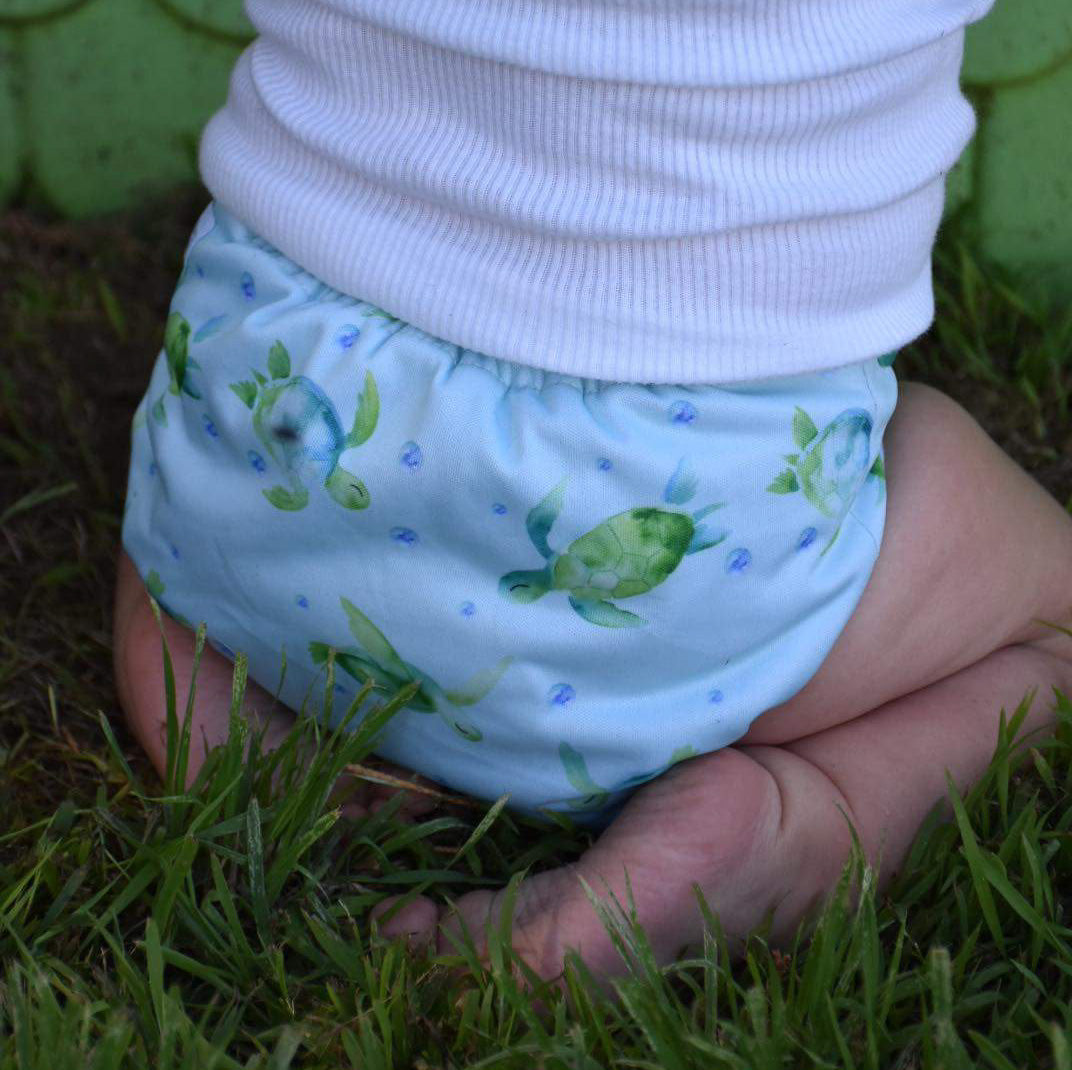The environmental impacts of disposable nappies

The environmental impacts of disposable products and nappies in particular is phenomenal. Each year around 300,000 babies are born in Australia alone. That is a lot of little bottoms that need nappies and a lot of single-use plastic nappies going to landfill, not to mention the disposable wipes and plastic nappy bags as well!
So let's investigate some of the environmental impacts that disposable nappies have.
Landfill
It is estimated that approximately 800 MILLION disposable nappies end up in landfill each year in Australia ALONE!
Degradability
Did you know that EVERY disposable nappy and wipe ever produced is STILL in existence today. It is estimated that they will take hundreds of years to break down however given that most disposable nappies are first placed in plastic bags perhaps they will never degrade due to not being exposed to the environmental elements required to do so.

Chemical exposure
According to the World health organisation, 2010 disposable nappies contain various chemicals that have been linked with long-term health conditions. Some of these chemicals include Dioxins which are listed by the EPA as a highly toxic chemical. Some of the known health implications due to exposure to Dioxins include issues with the immune system, reproductive issues and skin reactions.
Another chemical is Sodium Polycarbonate which is the gel-like absorptive substance in disposable nappies. This particular chemical is known to cause respiratory issues and skin reactions and according to the website Livestrong.com it was recently removed from tampons as it was linked to Toxic shock syndrome. These chemicals and many more are linked to awful health issues yet they are still used in the manufacturing process of disposables. Parents unknowingly put them against their baby's skin and later they pollute and seep into our Earth once disposed of!
Water Waste
According to Stephan Leahy in his book "Your water footprint" he states that is takes approximately 545 litres of water to produce ONE disposable nappy. JUST ONE! Now if we were to estimate that an average baby has around 10 changes a day for the first three months (approximately 91 days) of life that is 910 changes in the first three months alone and 910 disposable nappies heading to landfill. According to my calculations that means it takes an enormous 495,950 litres of water to produce enough disposable nappies just for three months! Just think about that for a minute. That is JUST for the first three months of life, that does not take into account the remaining 1003 days (number of days approximately from 3 months to 3 years old) and approximately 5000 changes until toilet training.
So now you are thinking "But it takes water to wash cloth nappies too" and yes it does. The average cloth nappy household will add an extra 2 loads of washing per week to their schedule. However that does not mean that you just have to wash cloth nappies alone. After the initial pre-wash you can add in extra clothing for the main wash - saving water, time and money! But lets look at some approximate annual figures for water usage when washing cloth nappies.
If you were to do two extra washes a week annually in a washing machine that uses approximately 64 litres per wash (Fisher and Paykel front loader) we can establish that it will take 6,654 litres of water to wash your nappies. Now lets multiply that by the three years your child will most likely use nappies for and we get 19,962 litres of water!
Only 19,962 litres of water for THREE YEARS of cloth nappy washing compared to 495,950 litres of water it would take to manufacture enough disposables for just THREE MONTHS! Mind blowing right?

Unfortunately many parents still choose to use disposable nappies. Perhaps they don't have the knowledge about the information I have just shared above? Perhaps it is because they trust in the companies that produce disposable nappies? Maybe it is out of pure convenience? Or maybe they just don't know how to start using cloth nappies? Whatever the reason knowledge is the key and if every cloth nappy family shares their journey and helps to educate those who want to know about the alternatives to disposables we can all make a small difference and overall a huge impact to the environment!
What can YOU do to help reduce your environmental impact?
* Use cloth nappies and reusable products where possible
* Choose products that don't contain plastic wrapping and packaging
* Calculate your water usage and work out ways to reduce this (shorter showers, catch water from the washing machine to water your garden).
* Share your knowledge with others - Baby shower gifts with cloth nappies are a great way to share the cloth love!
If you want advice on how to start using cloth nappies please Contact us. We are always more then happy to chat.
:) Danni




Comments
Lyndal —
Few users of disposables shake the poo into the toilet before placing the “disposable” in the bin. This means that a lot of human waste is preserved in the garbage instead of being sent through the sewerage where it is properly treated.
Ann Fowler —
Another major problem with disposable nappies, is the fact that parents don’t seem to be potty training their babies now. The disposable is so absorbent that the baby is more comfortable wearing a wet or soiled nappy and parents seem to be happy to let them keep wearing them for much longer. I have seen children who are three or four years old wearing them. When parents had to wash the nappies, they tried to toilet train them by the time they were two.
Michelle —
Great blog with some great advice.